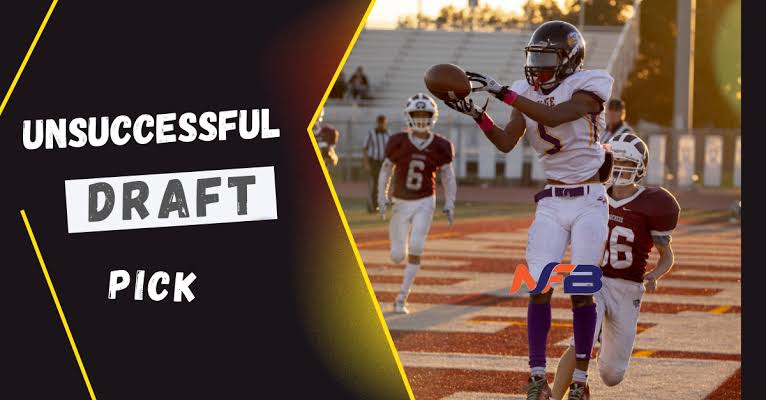Introduction
In the world of professional sports, the draft is a pivotal moment for teams and players alike. For athletes, being chosen in the draft represents a dream come true, a validation of years of hard work and dedication. However, not all draft picks pan out as expected. An unsuccessful draft pick can be a major setback, both for the player and the team. This article delves into the reasons behind unsuccessful draft picks, their impact, and how players can turn disappointment into new opportunities.
Understanding an Unsuccessful Draft Pick
An unsuccessful draft pick occurs when a player selected in the draft fails to meet the expectations set by their team. This can be due to a variety of reasons, including injuries, lack of performance, poor fit with the team’s system, or off-field issues. Teams invest significant resources in scouting and analyzing potential draft picks, but the outcome is never guaranteed.
Causes of an Unsuccessful Draft Pick
Several factors contribute to the failure of a draft pick:
- Injuries: Chronic or career-ending injuries can derail even the most promising careers.
- Performance Issues: Sometimes, players struggle to adapt to the professional level of play.
- Poor Fit: A player might not mesh well with the team’s playing style or culture.
- Off-Field Problems: Personal issues, legal troubles, or lack of discipline can negatively impact a player’s career.
Impact on Teams and Players
An unsuccessful draft pick can have significant repercussions:
- For Teams: Wasted draft picks can set a team back for years, affecting their overall strategy and success.
- For Players: The psychological toll can be immense, leading to a loss of confidence and motivation.
Case Studies of Unsuccessful Draft Picks
Examining specific cases can provide insights into common pitfalls:
- Sam Bowie (NBA): Drafted before Michael Jordan, Bowie’s career was marred by injuries.
- Ryan Leaf (NFL): A highly-touted quarterback whose career was derailed by poor performance and off-field issues.
- Greg Oden (NBA): Another injury-plagued career that failed to live up to its potential.
Strategies for Overcoming the Setback
For players, an unsuccessful draft pick does not signify the end of their career. There are several ways to bounce back:
- Rehabilitation and Training: Focusing on physical health and improving skills.
- Seeking New Opportunities: Trying out for different teams or leagues.
- Mental Resilience: Building a strong mental fortitude to handle setbacks.
Success Stories After Initial Failure
Many athletes have found success despite a rocky start:
- Kurt Warner (NFL): Went undrafted, worked in a grocery store, then became a Super Bowl champion.
- Jeremy Lin (NBA): Faced multiple rejections before his breakout with the New York Knicks.
- Rich Gannon (NFL): Had a modest start but later won an MVP award.
FAQs
What is an unsuccessful draft pick? An unsuccessful draft pick is when a player chosen in a professional sports draft fails to meet the team’s expectations due to various factors such as injuries, poor performance, or off-field issues.
How can a player recover from being an unsuccessful draft pick? Players can recover by focusing on rehabilitation and training, seeking new opportunities in different teams or leagues, and building mental resilience to overcome setbacks.
Can teams recover from an unsuccessful draft pick? Yes, teams can recover by reassessing their scouting and drafting strategies, making strategic trades, and focusing on player development to fill the gaps.
What are some notable examples of unsuccessful draft picks? Notable examples include Sam Bowie (NBA), Ryan Leaf (NFL), and Greg Oden (NBA), all of whom faced significant challenges that hindered their professional careers.
Are there success stories of players who bounced back from being unsuccessful draft picks? Yes, players like Kurt Warner, Jeremy Lin, and Rich Gannon faced initial failures but eventually achieved great success in their careers.
What should teams consider to avoid unsuccessful draft picks? Teams should conduct thorough scouting, consider the player’s fit within the team’s system, evaluate the player’s physical and mental health, and ensure the player’s personal and professional values align with the team’s culture.
Conclusion
An unsuccessful draft pick can be a challenging experience, but it doesn’t mark the end of the road. By understanding the factors that contribute to such setbacks and exploring strategies to overcome them, both players and teams can find new pathways to success. Embracing resilience, adaptability, and continuous improvement is key to turning initial disappointment into future triumphs.

